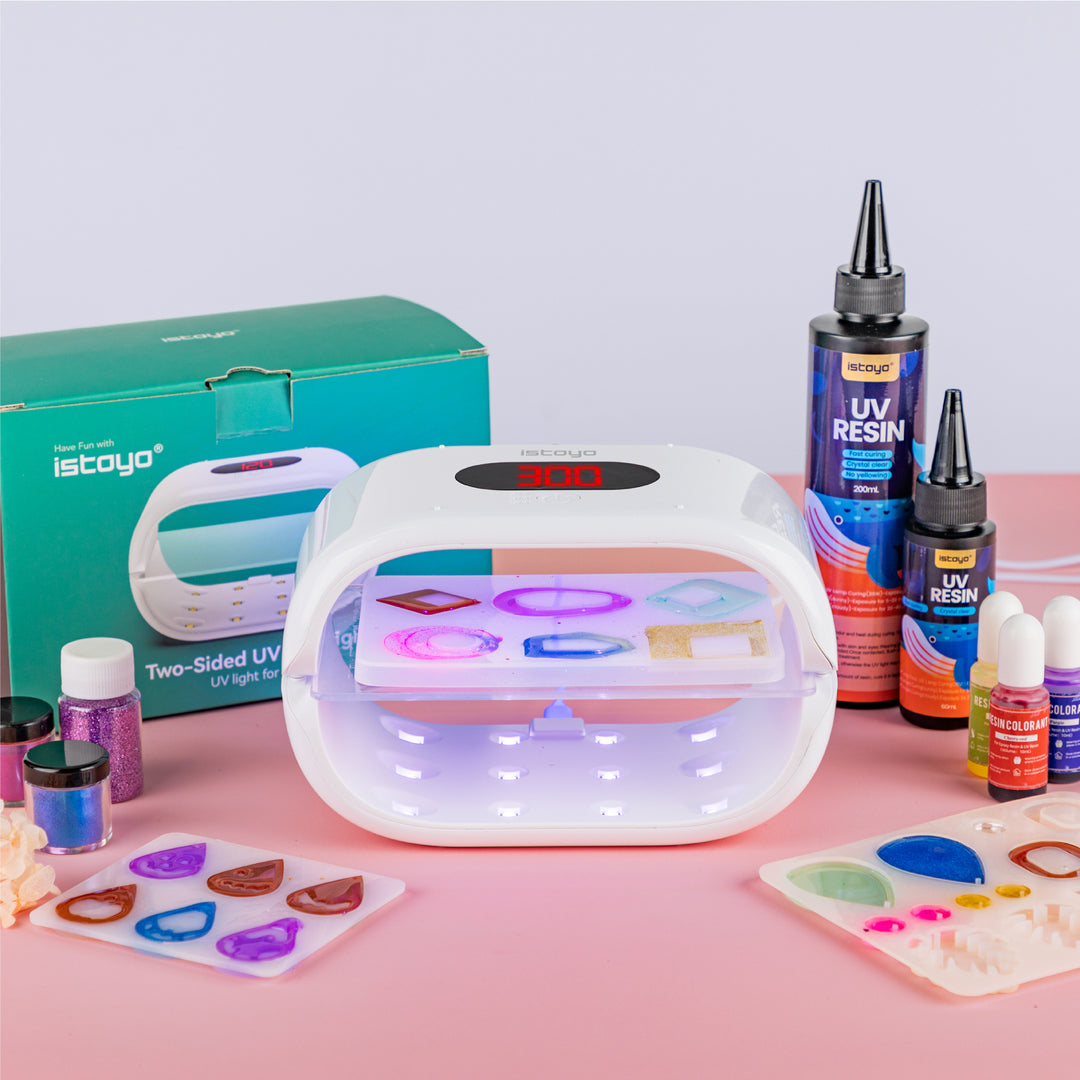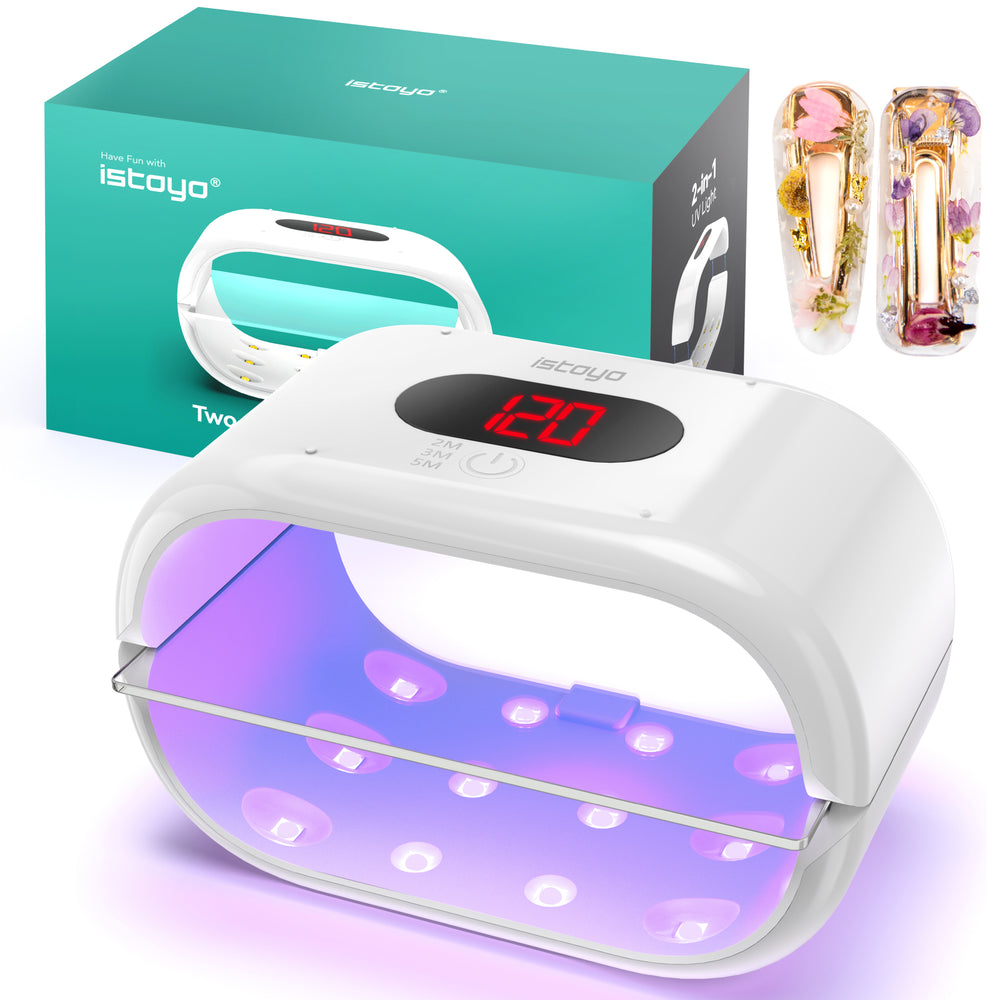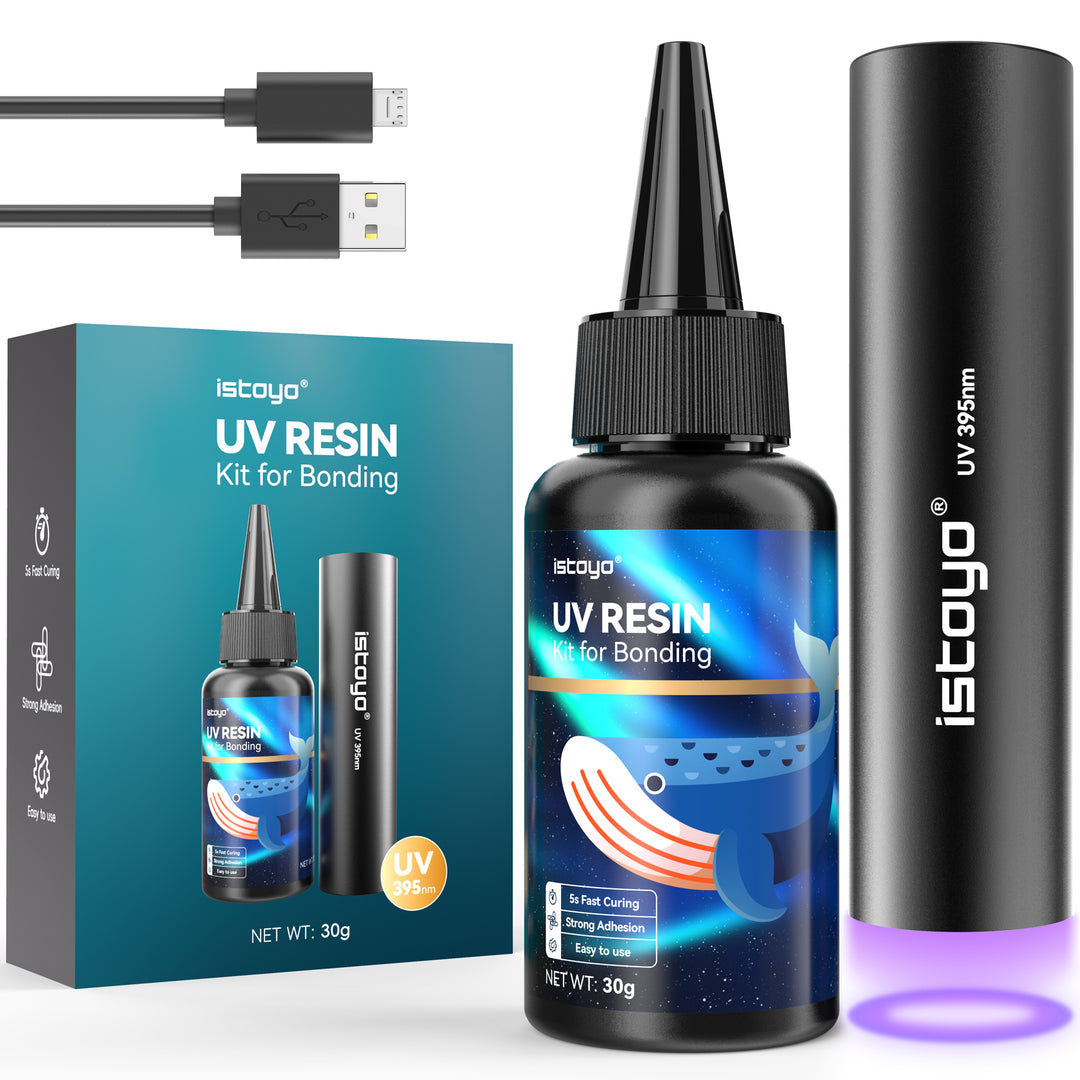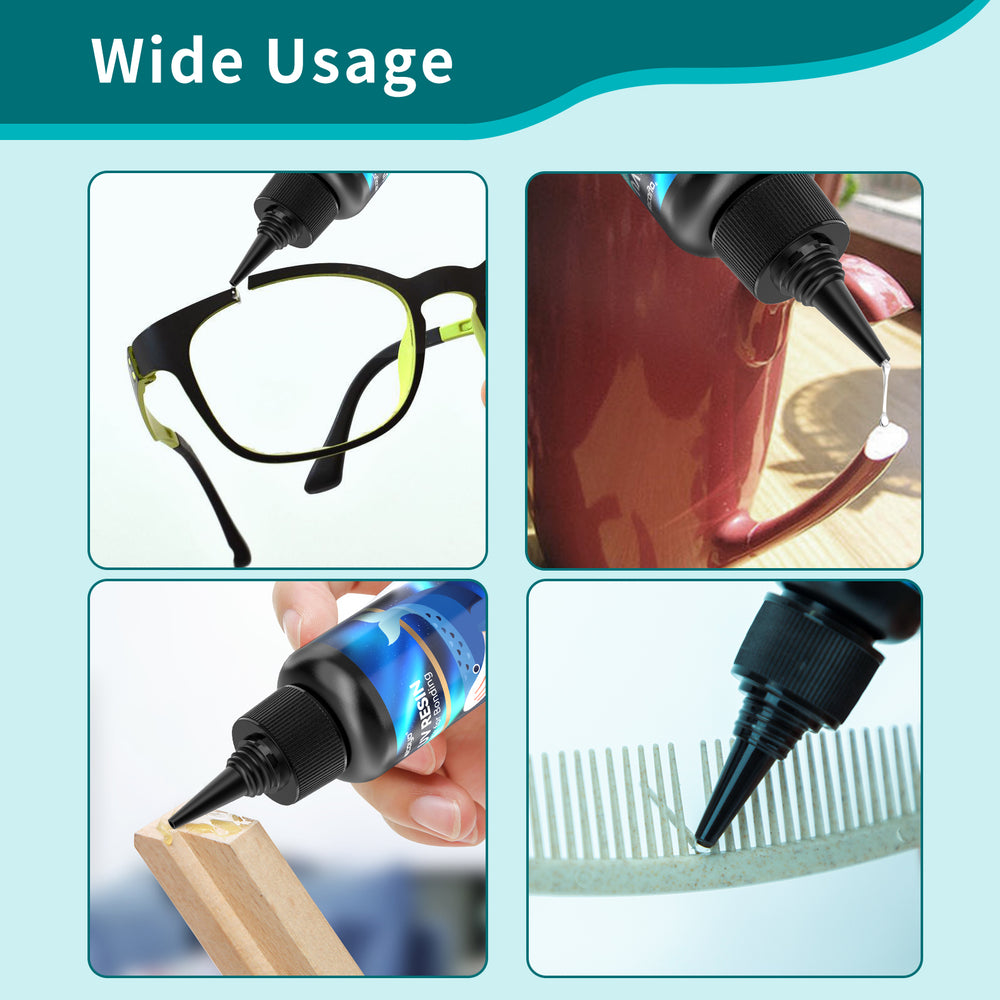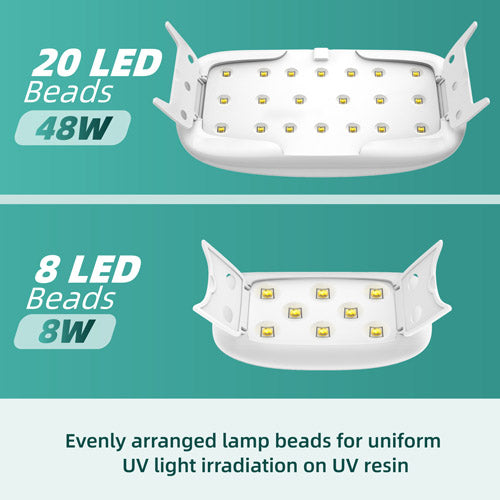Filter
UV Light
UV Light for UV Resin:
1. Understanding How It Works and Its Benefits
UV light is an important component when it comes to using uv resin for art and crafts.
1. Understanding How It Works and Its Benefits
UV light is an important component when it comes to using uv resin for art and crafts.
UV light, also known as ultraviolet light, is a form of electromagnetic radiation that is invisible to the human eye. When it comes to using uv resin, UV light plays a crucial role in the curing process. UV resin cures when exposed to UV light, which causes a chemical reaction that hardens the uv resin into a solid, durable material.
There are many benefits to using UV light when working with epoxy resin.
Firstly, it speeds up the curing process significantly. Without UV light, the curing process can take several hours or even days to complete. But with UV light, the process can be completed in a matter of minutes.
Secondly, using UV light can help to create a stronger, more durable bond.
Thirdly, UV-cured uv resin also offers superior protection against yellowing caused by UV light.
2. How to Choose UV Lights?
There are many benefits to using UV light when working with epoxy resin.
Firstly, it speeds up the curing process significantly. Without UV light, the curing process can take several hours or even days to complete. But with UV light, the process can be completed in a matter of minutes.
Secondly, using UV light can help to create a stronger, more durable bond.
Thirdly, UV-cured uv resin also offers superior protection against yellowing caused by UV light.
2. How to Choose UV Lights?
There are several factors to consider which include the wavelength of the light, the intensity of the light, and the distance between the light source and the material being cured.
Wavelength
The wavelength of the UV light is an important factor to consider because different UV resins require different wavelengths of light to cure properly. Some common UV wavelengths used for curing UV resins are 365nm, 385nm, and 405nm. It is important to choose a UV light with the appropriate wavelength for the specific UV resin being used.
Intensity
The intensity of the UV light is another important factor to consider. The intensity of the light will affect the curing time of the UV resin. A higher intensity UV light will cure the resin faster, but it may also cause the resin to overheat and crack. It is important to find the right balance between curing time and intensity to ensure the best results.
Distance
The distance between the UV light source and the material being cured is also important to consider. The closer the UV light is to the material, the faster it will cure. However, if the light is too close, it may cause the material to overheat and crack. It is important to find the right distance to ensure proper curing without damaging the material.
In addition to choosing the right UV light, there are several important considerations to keep in mind when curing UV resin. These considerations include the temperature of the curing environment, the thickness of the material being cured, and the curing time.
3. Conclusion
Using UV light for uv resin is an important and beneficial component when it comes to creating high-quality, durable, and long-lasting art and craft pieces. With its ability to speed up the curing process, create a stronger bond, and offer superior protection against yellowing, UV-cured uv resin is a great choice for any artist or crafter looking to create beautiful and long-lasting pieces.
Wavelength
The wavelength of the UV light is an important factor to consider because different UV resins require different wavelengths of light to cure properly. Some common UV wavelengths used for curing UV resins are 365nm, 385nm, and 405nm. It is important to choose a UV light with the appropriate wavelength for the specific UV resin being used.
Intensity
The intensity of the UV light is another important factor to consider. The intensity of the light will affect the curing time of the UV resin. A higher intensity UV light will cure the resin faster, but it may also cause the resin to overheat and crack. It is important to find the right balance between curing time and intensity to ensure the best results.
Distance
The distance between the UV light source and the material being cured is also important to consider. The closer the UV light is to the material, the faster it will cure. However, if the light is too close, it may cause the material to overheat and crack. It is important to find the right distance to ensure proper curing without damaging the material.
In addition to choosing the right UV light, there are several important considerations to keep in mind when curing UV resin. These considerations include the temperature of the curing environment, the thickness of the material being cured, and the curing time.
3. Conclusion
Using UV light for uv resin is an important and beneficial component when it comes to creating high-quality, durable, and long-lasting art and craft pieces. With its ability to speed up the curing process, create a stronger bond, and offer superior protection against yellowing, UV-cured uv resin is a great choice for any artist or crafter looking to create beautiful and long-lasting pieces.



